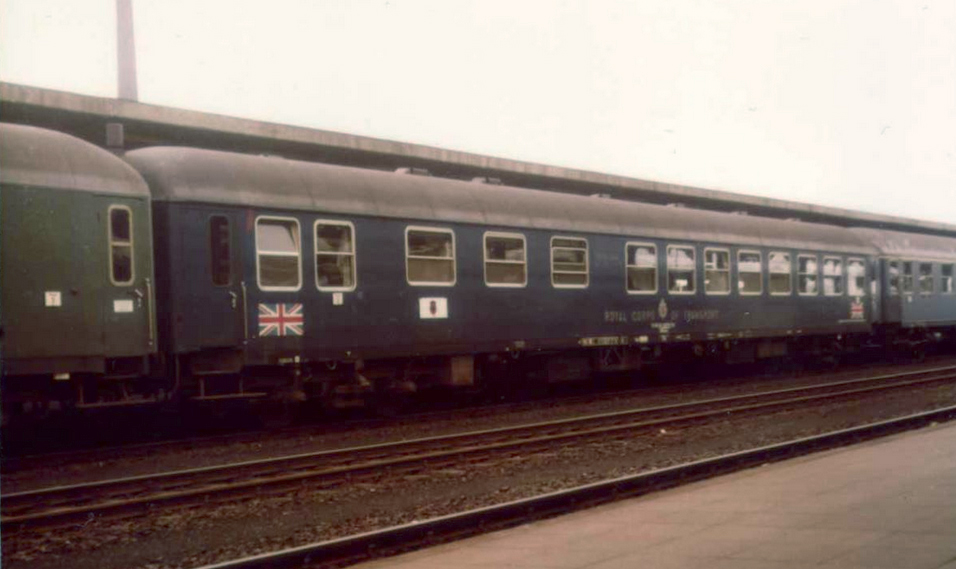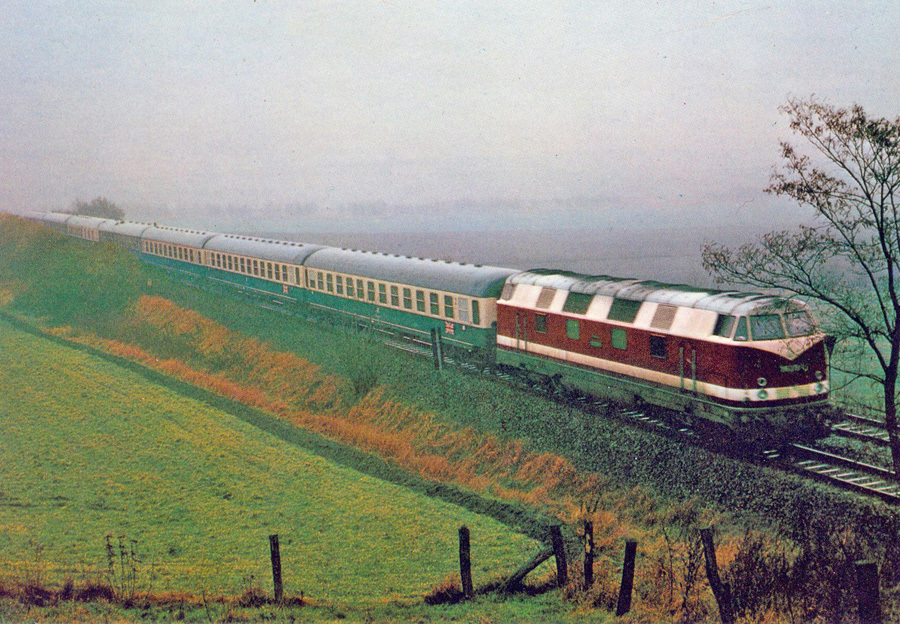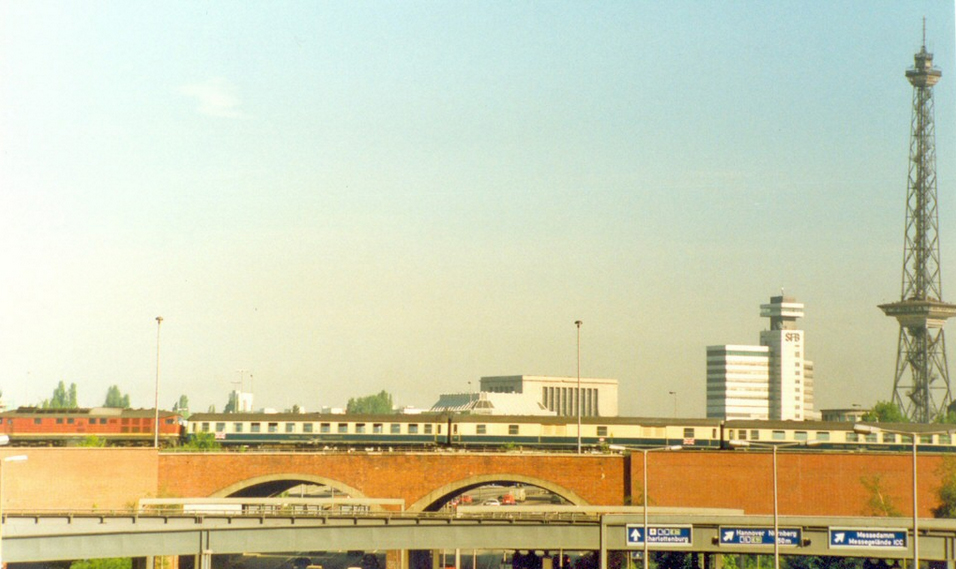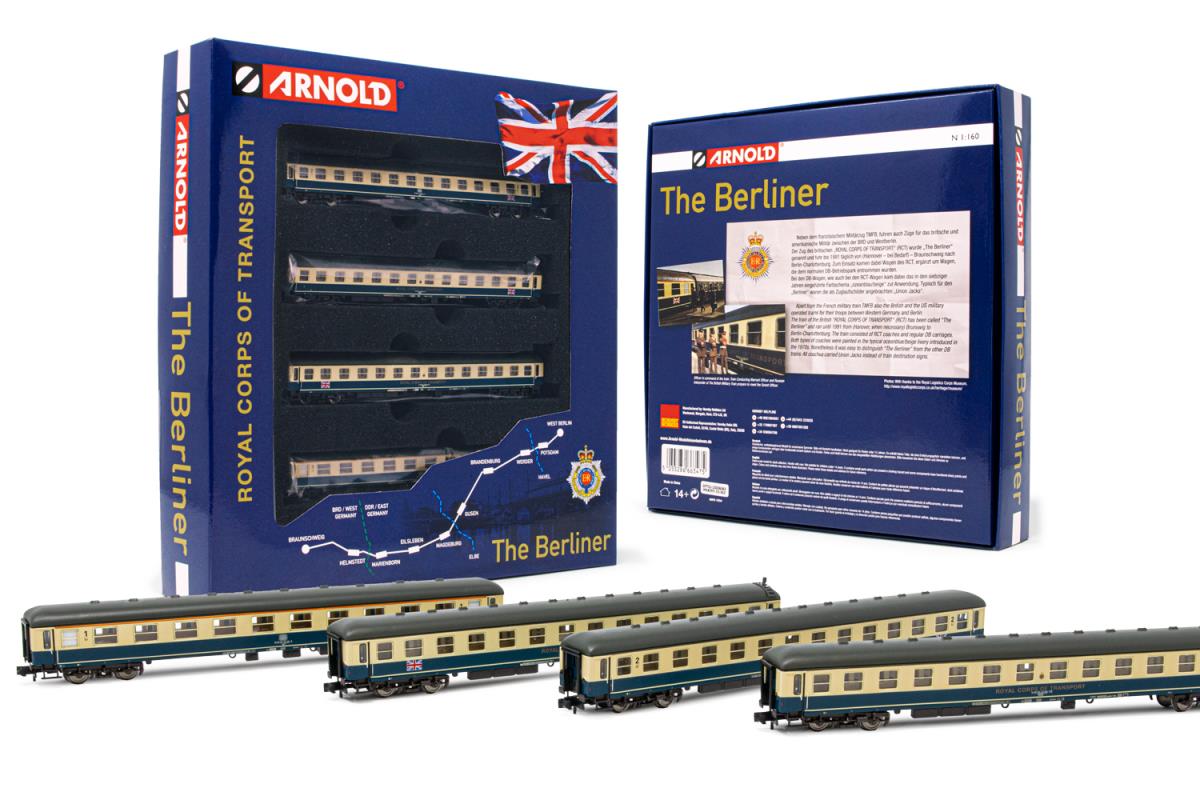

 STUART JORDAN tells us the history of this military train which ran from West Germany into Berlin.
STUART JORDAN tells us the history of this military train which ran from West Germany into Berlin.
At the end of World War 2 Germany was split into Zones of Occupation, each overseen by US, British, French, and Soviet administrators. Berlin itself was similarly split, but it was deep within the Soviet zone. In the period straight after the war railways were incredibly important for troop movement.
Many routes were run by the British Army, from the Channel Ports on the coasts of France and Holland into occupied Germany. The ‘Berliner’ train was run by the Royal Corps of Transport into the British sector of Berlin from 1945. By 1947 the train was running an overnight shuttle service between Berlin and the West German towns of Bad Oeynhausen and Herford – which was where the British Army of the Rhine (BAOR) had its headquarters. Here The Berliner linked up with services to/from the Hook of Holland port.
In 1948, the service was halted due to the Berlin Blockade – The Soviet Union blocked all road, rail, and canal travel into Berlin from the West. The blockade ended in 1949, after several million tons of supplies were airlifted into Berlin.
In the 1950s the terminating stop of The Berliner was moved east from Bad Oeynhausen to Hannover. By the 1960s the terminus was moved again to Brunswick. The timetable below relates to these later years of service. The long dwell times at Potsdam and Marienborn are for passport checks and searching of the train.

A special The Berliner ran on the weekend of 12/13th May 2012 to mark the 21st Anniversary of the last service. The train included a restaurant car, complete with original RCOT menu and wine list.

Berliner Coach in the original Cobalt Blue Livery.
The coaches for The Berliner were mostly built to existing prototypes of DB express coaches, with modifications for their unique use. The original coaches were delivered in Cobalt Blue but were repainted in 1985 to Ocean Blue/Light Ivory. Each coach carried the crest of the Royal Corps of Transport (RCOT) and a rectangular Union Jack plate hanging from the destination board (although towards the end of their run, the flag was replaced with an actual destination board). Each coach had the legend ‘Eigentum der Britischen Rheinarmee’ (Property of the British Army of the Rhine) under one of the Union Jacks.

Official image of The Berliner used on a postcard.

The Berliner passes the Funkturm Radio Tower in West Berlin, near to Charlottenburg Station.
The consist of the train was six coaches – Three DB passenger coaches, a RCOT restaurant car, a DB baggage van, and a RCOT Staff (or Officer’s) Coach.
Staff coaches were built for the train in 1967 by Deutsche Waggon und Maschinenbau. These were for the crew of the train and carried bunk beds and had under floor diesel generators, fuel tanks and water heaters. Each staff coach also carried a radio transmitter to keep in contact with UK military bases. There were three armed infantry on each train.
The passengers were carried in standard DB Express Coaches, usually 1st Class. All windows on the coach carried signs stating ‘THE USE OF CAMERAS AND BINOCULARS IS PROHIBITED’, to dissuade passengers from infringing on Soviet territories. On busy days extra coaches were added to the train, including an extra restaurant car.
Each restaurant car could sit forty-seven diners. as with the staff coaches, they had underfloor equipment to provide hot water and gas, as well as compressors for the chillers. They were later refitted with fully electric equipment so that they could take power straight from the locomotive, but when the loco was detached, apparently the kitchen was powered by a generator hooked up to two Volkswagen Golf engines!
The train also included standard DB baggage vans to hold luggage, post, and Naafi supplies. One slightly sinister thing that the baggage van carried was three days supply of food for the passengers and crew. This was just in-case anything happened while the train was running (presumably the outbreak of hostilities) and the people on board had to survive without external assistance.
The RCOT also ran escort coaches, which were used to guard freight trains. These were a standard DB Couchette Sleeper with a kitchen with one difference - they had viewports in the roof so that the sentries on duty could see down the train. They were occasionally used on The Berliner as a replacement for the staff coach.
It was hard to find information about the locomotives used to pull The Berliner – photographs that I found show it being pulled by DR Class 132s and V200s, but obviously this only covers some of the time that it was running – can anyone out there help?
A few models of the Berliner Coaches have previously been produced – both Marklin 4MFOR and Roco Minitanks have produced representations of the officer coaches in HO Scale. Unfortunately, both companies produced the coaches in the wrong colour – they were both dark green. Maybe they wanted them to be more ‘military’?

Due for release in 2020 is a set of four coaches in N Scale from Arnold (HIN4297), which consists of two officer coaches, a 1st class coach, and a 2nd class coach. This new set is thankfully in the correct livery – it is in the post-1985 Ocean Blue and Light Ivory colours.